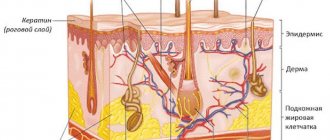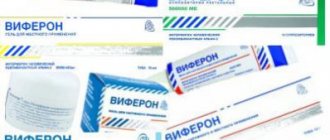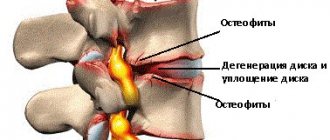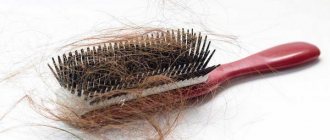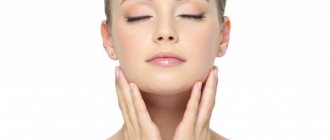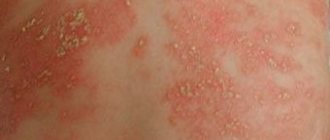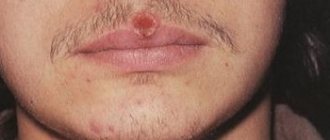Severe dandruff and itching are sure signs of seborrhea, a disorder of the sebaceous glands. Seborrhea can be dry, oily, mixed, tubular, etc. - in accordance with the types of dandruff and its location. If your head itches, scales flake off and hair falls out slightly, these are symptoms of seborrheic dermatitis, an unpleasant disease that affects the scalp and hair. Most often, fatty and large scales of yellow or yellowish-white color appear.
If no measures are taken, alopecia areata will develop, that is, all the hair on the areas of the head affected by seborrheic dermatitis will gradually fall out. But no matter what type of seborrhea a person suffers from, it is necessary not only to fight dandruff, but also to eliminate the cause of its appearance. Any type of dandruff can be cured using various means, and this article contains the most effective ways to treat dandruff at home. But before that, about the types of seborrhea: knowing them will help you choose the right remedies.
Types of seborrhea and their symptoms
Infectious types of seborrhea that are transmitted from person to person include the following.
- Dry seborrhea. Dry dandruff appears (usually large), there is constant itching and inflammation of the skin in places where dandruff accumulates, and the hair is brittle and dry. The color of dandruff is usually white, and if the skin is severely inflamed, it is red, or rather reddish.
- Oily seborrhea. The hair becomes greasy, quickly becomes dirty, can stick together into separate strands, greasy yellowish-white dandruff appears, which is difficult to remove from the skin and is difficult to comb out. In the liquid form of oily seborrhea, acne and boils can form on the skin, in the thick form - atheromas, which can fester and other large purulent formations. If the symptoms are not eliminated, seborrheic dermatitis develops, which leads to hair loss. The color of dandruff with seborrheic dermatitis is yellow.
- Mixed seborrhea. Symptoms of both types of seborrhea appear, but in different places. So, if dry dandruff forms on the head, oily scaly formations may appear on the face, covering the areas around the nose, ears, forehead, and cheekbones.(1)
Among the non-infectious seborrheic disorders, tubular seborrhea stands out, when white dandruff forms directly on the hair. Tube dandruff is small, and the skin itches and turns red when combed. In most cases, tubular seborrhea is a concomitant phenomenon with hormonal changes and most often occurs in adolescents during puberty.
Brown or black dandruff may also be observed. This is what acne peels and scales with dried blood look like, and treatment in this case is also necessary. Now about what helps best against dandruff.
Folk remedies against dandruff and hair loss
Herbs, masks, lotions help not only get rid of dandruff, but also strengthen the hair follicles. To do this, they must be used correctly, because what is suitable for dry hair is unsuitable for oily hair.
Remedies for dry dandruff
If the skin is dry, you do not wash your hair often, this will worsen the situation, since the fat does not have time to be released and perform its function. Ideally, washing your hair should happen once a week, but since the environment is bad, the amount can be increased up to twice.
To treat this problem, the following masks are made:
You need to take two egg yolks. To them add a small spoon of burdock oil and the juice of half a lemon. The product is applied for an hour. The top of the head is covered with film. Additionally, it is better to wrap it up. Wash it off after an hour with what you usually wash your hair with.- Burdock oil is slightly heated to a comfortable temperature. To do this, place a cup of oil in a saucepan with water and heat it on gas. After this, it is applied to the roots of the hair, and the head is wrapped for half an hour. Before washing, massage your scalp lightly.
- Take a mixture of dried oak bark and onion peel in the amount of half a glass. Pour in a liter of boiling water and cook. The resulting solution is cooled to a warm temperature, then applied to the hair for half an hour. Wrap your head in something warm. After 30 minutes, wash your hair. The procedure is done once a week for about a month.
In addition to masks, decoctions are effective:
You will need 2 tablespoons of burdock roots and a glass of water. Cook for 10 minutes. After cooling, rub into the roots. Repeat 2 times a week.- Linden flowers are poured with a liter of boiling water. After half an hour, strain. Wash your hair and then rinse with linden.
- Chamomile. It is brewed over a fire, cooled and used for rinsing after washing.
Important: linden can give a brownish or reddish tint, so it is more suitable for dark hair.
Method number 1. Antifungal shampoos
It is known that dandruff appears due to disruption of the sebaceous glands, which can produce both insufficient and excessive amounts of secretion. In the first case, dry dandruff appears, in the second - oily. But excess sebum is not enough for dandruff to appear: flakes are formed as a result of the proliferation of the Malassezia fungus, which also lives on healthy skin, however, with an increase in the secretion of the sebaceous glands, an increase in Malassezia colonies is observed, which leads to the formation of dandruff. With insufficient sebum production, the epidermis becomes inflamed, and the fungus also begins to multiply, resulting in dandruff. Itching is a reaction to chemically active waste products of the fungus. Antifungal shampoo helps remove excess fungus, returning the amount of sebum to its normal value of 46%. (2). This shampoo contains ketoconazole, a drug that has a strong antimycotic effect, which has been proven by clinical studies of the effectiveness of ketoconazole. (3)
Other factors that contribute to dandruff
Seborrheic disorders in adults and children can also occur for reasons other than those described above:
- Using aggressive scalp and hair care products. [7] For example, shampoos that contain components such as parabens, [8] sodium lauryl sulfate, [9] triethanolamine (TEA) in concentrations above 5%, [10] diethanolamine (DEA). [eleven]
- Diseases of the gastrointestinal tract and internal organs. Increased activity of the Malassezia fungus has been proven as a result of colitis, dysbiosis, liver disease and other diseases, as well as frequent constipation. [2], [13]
- Also, the occurrence of seborrhea can be caused by increased sweating and/or sebum secretion, frequent wearing of a hat at times when one can do without it. [2]
Method No. 3. Masks, lotions and oils on a natural basis
(5)
These folk remedies help relieve itching and temporarily eliminate the formation of dandruff. The following mixtures of natural lotions are usually used:
- burdock oil, onion juice and vodka;
- carrot greens, lemon juice, mint and water;
- lemon juice with olive and castor oil;
- walnut shells with diluted alcohol.
Masks are made from raw eggs mixed with nettle infusion and vegetable oil, as well as from castor oil, which is used either alone or together with calendula tincture.
Essential oils that help in the fight against dandruff are lavender, cedarwood, eucalyptus, geranium, mint, rosemary, tangerine, basil, as well as tea tree and patchouli oil. You can also prepare a rinse from natural ingredients, which will serve as an auxiliary remedy for eliminating the symptoms of seborrhea. Rinses are made using lemon zest, chamomile and sage, as well as birch leaves.
Can you get dandruff from a comb?
When combing the scalp between the teeth of a comb or massage brush, dirt, falling hair, and all kinds of skin detachments accumulate, which may contain microorganisms that are the source of the disease. Using someone else's household item, a person transfers microorganisms to his scalp that can become a source of disease. To prevent this from happening, it is necessary to use only individual hygiene items and not share them with others, relatives, or colleagues. In everyday life, regular cleaning of the comb and rinsing is required.
Method number 4. Other means
(6)
- The top anti-dandruff remedy traditionally includes baking soda. When rubbed, baking soda gives a temporary antifungal effect and also cleanses the head even of oily dandruff, acting as a scrub.
- Henna is well suited for the treatment of seborrhea at the initial stage - it is used both separately and together with other remedies. An important addition: to prevent your hair color from changing during the procedures, buy colorless henna.
Method No. 5. Hair masks made from natural products
(7)
- Onions, garlic and black pepper have sufficient chemical activity to temporarily relieve the symptoms of seborrhea. For treatment, onion peels are mixed with vodka (8), garlic with burdock oil (9), and ground pepper with various fermented milk products, for example, kefir, after which the resulting mixtures are applied to the scalp. (6)
- Citric acid is another strong irritant for the pathogenic fungus that attacks hair and skin during seborrhea. Just do not use compresses made from pure lemon juice, as this will lead to skin irritation. You need to mix lemon juice with any oil: olive or essential oil that suits you.
Proper preventative care for the scalp and hair
- The first and main rule is to choose hair and scalp care products in accordance with their type and needs.
- Wash your hair whenever it gets dirty. Use cleansers with mild, hypoallergenic formulas based on natural soothing and restorative ingredients.
- If you have a hypersensitive scalp, choose sulfate-free formulas labeled “SLS free” on the packaging. Such products act softer and more delicate.
- Apply masks and conditioners to your hair, spacing 2-5 cm from the roots (unless otherwise specified by the manufacturer) - residues from the treatment can cause dehydration and an allergic reaction of the scalp.
What should you not do if you have seborrhea?
- First of all, forget about rubbing with salt. Salt is sometimes recommended to be rubbed into the skin, which supposedly leads to the disappearance of dandruff. However, in reality, everything happens the other way around: rubbing with salt does give a certain effect, but it is short-lived, and then the already irritated skin will begin to peel off even more.
- For dry seborrhea, you should not use table vinegar, as it will dry out the skin even more, and for oily seborrhea, it is better to use only apple cider vinegar, since table vinegar is too aggressive.
- Even with severe itching, try to scratch the itchy areas less, as this will provoke further development of the process of dandruff formation, both dry and oily.
- If you have dry seborrhea, you should not wash your hair too often, and if you have oily seborrhea, you should not wash your hair too often. If you frequently wash a dry hair, the skin will constantly suffer from dryness, and if you rarely wash an oily head, the abundant secretion will heavily pollute the hair and skin, which will only worsen seborrhea.
What is dandruff
The medical name is “pityriasis”, translated from Latin as “bran”. This is a pathology caused by the desquamation of dead epithelial cells - the outer layer of the dermis of the scalp. As a result, dead skin particles are intensively exfoliated over a long period of time. The symptom is caused by a failure in the process of renewal and exfoliation of cells in the stratum corneum of the skin.
Dandruff is not an independent disease; its appearance is caused by various pathologies. The condition is often accompanied by severe itching of the scalp. The hair itself becomes either dull and dry or oily, depending on the type of dandruff.
How to cure dandruff forever?
It is not difficult to quickly get rid of dandruff on your head; it is much more difficult to make sure that it does not appear again. If it is not possible to eliminate the cause of malfunctioning sebaceous glands (heredity and some chronic diseases), the only key to healthy skin and hair is prevention. However, the main reason that causes increased or decreased sebum production and fungal growth is in most cases removable. The main factors that can lead to seborrhea and seborrheic dermatitis vary depending on the type of seborrhea.
- If your hair is washed too often and the wrong shampoo is used, the sebaceous glands cannot produce enough secretion. As a result, the skin dries out and the Malassezia fungus begins to multiply, resulting in dry dandruff.
- If you wash your hair too rarely, your hair and skin become dirty, which can lead to infection of the epidermis and the appearance of oily dandruff.
- Due to poor nutrition, both dry and oily dandruff can appear. Seborrhea occurs due to a lack of food rich in vitamins and minerals, healthy fats, as well as substances such as zinc, selenium and calcium. On the other hand, seborrheic disorders are also common in those people who eat too much fatty, spicy, fried and salty foods.
- Severe nervous tension and constant stress are another serious factor for the possible appearance of dandruff on the head. In these cases, the body works under increased load, which also affects the secretion organs, the functioning of which may be disrupted.
- Various diseases can also lead to the formation of dandruff: these are primarily diseases of the gastrointestinal tract and endocrine system. Therefore, dandruff can be one of the signs of a serious disease.
- Another reason for the appearance of dandruff is weak immunity, which causes the activity of various fungi, including the yeast-like Malassezia.
- Dandruff can appear due to hormonal changes. It forms in adolescents during puberty, as well as when taking hormonal drugs. The sebaceous glands react to an increase in male hormones, so in adolescence, dandruff appears more often in boys.
- There is a hereditary predisposition to seborrhea, and this is one of the few causes that is not easy to eliminate. However, if you follow the rules of hygiene and proper nutrition, you can not only quickly remove dandruff from your head, but also reduce the likelihood of its further occurrence to almost zero. (1)
Among preventive agents, 1% ketoconazole, which is part of the Perhotal medicinal shampoo, which has successfully passed clinical trials, has a good effect. () The shampoo is available in two forms: with 2% ketoconazole for treatment and with 1% for the prevention of all types of seborrhea, seborrheic dermatitis and other skin diseases.
What not to do?
Absolutely forbidden:
- Scratch your head. Itchy dandruff can be very uncomfortable, but scratching and scratching your skin will make the problem worse. Through the slightest damage, infections can easily penetrate, which can lead to the formation of pustules;
- Use alcohol-based products, as they greatly dry out the skin;
- Dye your hair and use other chemical hair products;
- Use metal combs; the teeth of such a comb can damage the scalp and cause more dandruff to appear.
- Keep the use of hair dryers and curling irons to a minimum.
Seborrheic dermatitis
When listing the types of dandruff, one cannot fail to mention seborrheic dermatitis. This is a general term for diseases that are associated with the active proliferation of fungi, the formation of crusts, redness, itching and peeling.
Seborrheic dermatitis can occur with infectious diseases such as lichen, or non-infectious diseases - psoriasis, neurodermatitis. Symptoms appear on the skin in areas with impaired sebum secretion.
The fungus produces lipotic enzymes that break down fatty acids. When there are too many enzymes, an inflammatory reaction occurs on the skin. Outwardly, at first it looks like peeling. Scratching leads to the formation of bleeding wounds.
The symptoms of seborrheic dermatitis are similar to dandruff. However, we are talking about it only if more than 83% of the microflora of the scalp consists of pathogenic fungi. For dandruff, this figure is 74%. Thus, dandruff is the first stage of seborrheic dermatitis. If left untreated, it will lead to serious consequences.
